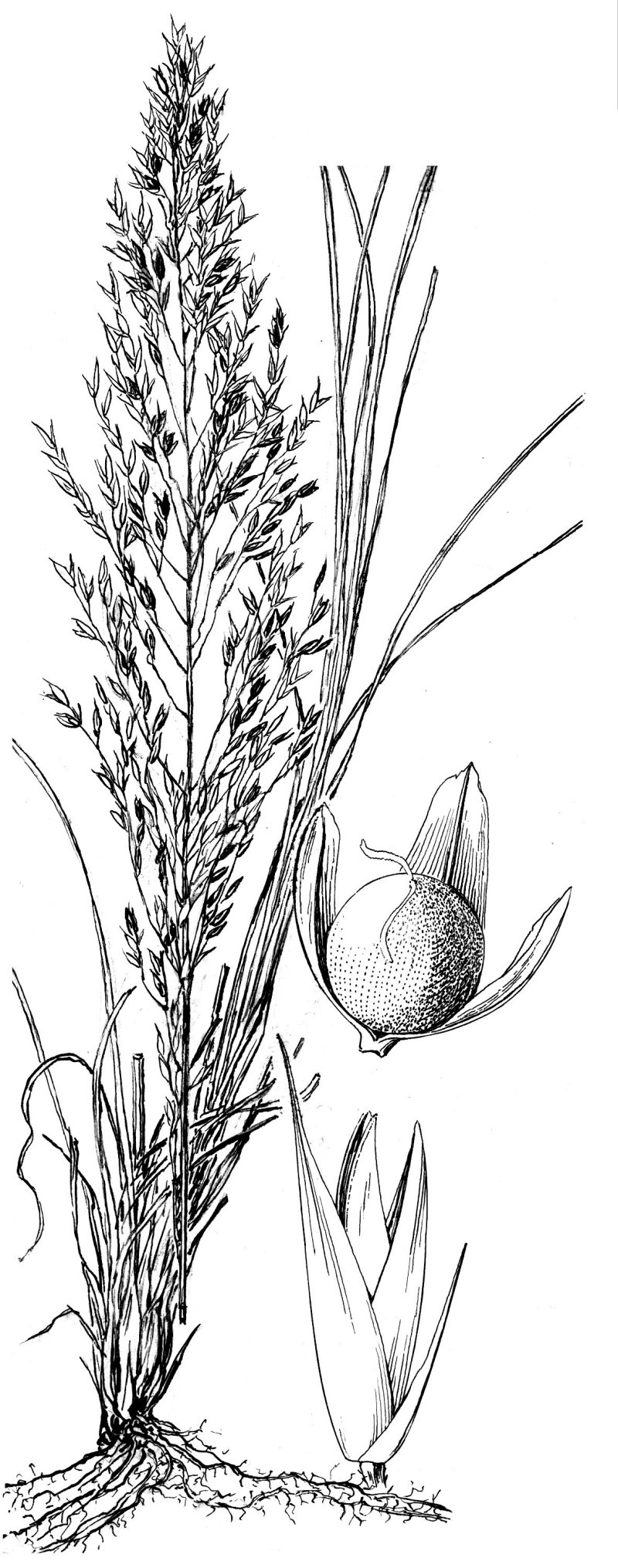
Sporobolus heterolepis A. Gray. Prairie Dropseed Habit: Densely tufted perennial. Culms: 3-70 cm. tall, erect, slender, wiry, densely tufted, simple. Blades: 20-50 cm. long, 2 mm. wide, or less, flat, involute at the slender tapering tip, the basal ones about one half as long as the culm, glabrous, with rough margins and midribs. Sheaths: Longer than the internodes, the lower short and the upper long and clinging to the culm, somewhat pilose at the throat, and the lower sometimes sparsely pilose on the back. Ligule: A ring of short hairs. Inflorescence: Panicle 5-25 cm. long, open, exserted, the branches ascending or spreading, 3-6 cm. long, bearing the dark colored spikelets towards their tips. Spikelets: Awnless, 4-6 mm. long, grayish, 1-flowered. Glumes: Smooth and glabrous, the first subulate, 2-3 mm. long, the second lanceolate, 4-5 mm. long, acuminate or awn-pointed, varying in length in the same panicle. Lemmas: Obtuse or acute, as long as or shorter than the second glume, 1-nerved, glabrous. Palea: 2-nerved, as long as or slightly longer than the lemma. Fruit: Grain very large, pericarp shining, nutlike, splitting the palea. Habitat: Prairies. August-September. Kansas Range: Northeast one fourth. Use: Forage grass, commonly found in native hay meadows , but not in grazed pastures.